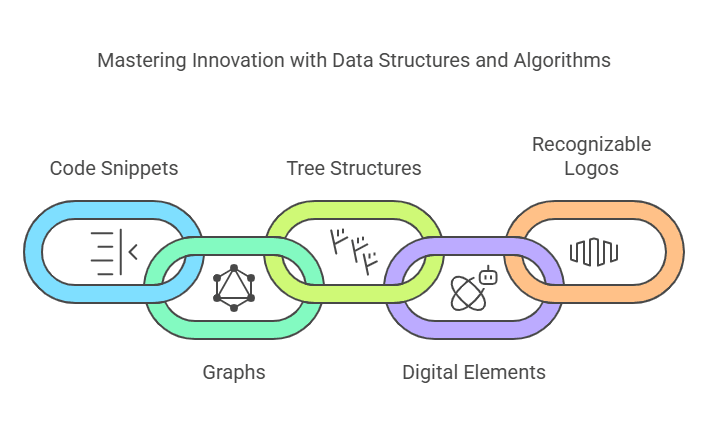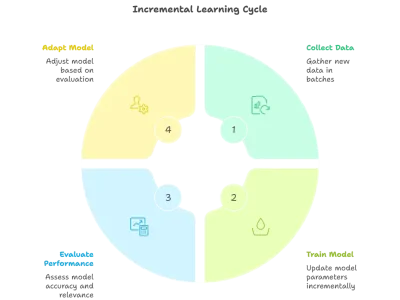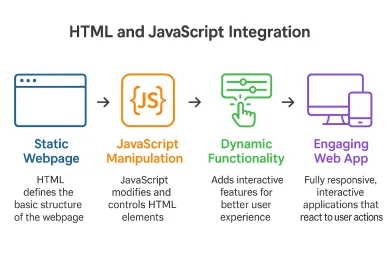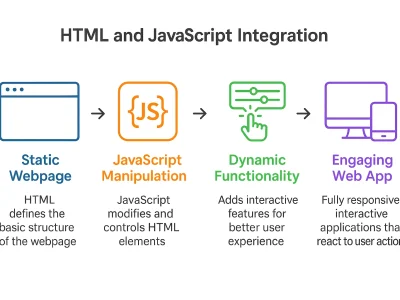Why Data Structures and Algorithms Matter
If you want to become a top-notch programmer, mastering Data Structures and Algorithms(DSA) is non-negotiable. Whether you’re an aspiring software engineer, a competitive programmer, or preparing for tech job interviews, strong DSA skills will set you apart from the crowd. You will quickly come to appreciate how much DSA makes one a master of problem-solving in computer science. That is how effective data structures are, just as a well-organized bookshelf makes it easier to pull out a book anytime. With algorithms that work like step instructions in solving problems effectively, it’s great. Here’s why you should be concerned: here’s why DSA should concern you:
- Breaking the Coding Interviews- For DSA, that is the kind of heavy
- weights that the major tech companies like Google, Amazon, and
- Microsoft tests candidates.
- Optimising Software Performance- Every code needs to be optimised to maintain a large-scale application easily.
- The Gracing Competitive sites like Codeforces, LeetCode, &
- Codechef will be short of a very good DSA background.
- Building scalable Applications- Social media networks from some fintech
- solutions, and control tons of data using effective DSA.
Real-world example of DSA in Amazon
Millions of product searches are conducted by Amazon daily. Hash tables are used to quickly look for products. Priority queues are used for processing customer orders. Graph algorithms are applied to optimise delivery routes. DSA is the key that enabled you to receive a “Customers who bought this also bought…” recommendation!
How Quantum Computing Could Change DSA
Quantum computing will change the face of traditional algorithms as technology progresses. Quantum computers like those made by Google’s Sycamore and IBM’s Qiskit take advantage of quantum superposition to execute a large number of calculations exponentially faster than classical computers. This would render a lot of present algorithms inefficient while initiating the birth of stronger methods of problem-solving. For example, Shor’s algorithm can break traditional encryption in a matter of minutes and thus challenge existing standards in cybersecurity. “Another one, quantum-enhanced search algorithms could also optimize graph traversal and AI-based decision-making, thus making DSA an actively changing field-one where programmers have to continuously keep pace with.”
Here’s what coding interviews might be like:
- Grasp the problem statements; do not rush into coding.
- Think of different approaches.
- Write clean code with good documentation.
- Along with that, optimize your time as well as space complexity.
Real-World Example: How Netflix Uses DSA
Netflix’s recommendation engine is powered by graph algorithms and hash tables that analyse your viewing history and suggest movies based on millions of other user interactions. This AI-driven personalisation is why you keep binge-watching!
Real-World Example: How Facebook Uses Graphs
Facebook’s “People You May Know” feature runs on graph traversal algorithms (BFS & DFS), analysing user connections to suggest relevant friends.
Algorithms: The Logic Behind Problem-Solving
An algorithm is a step-by-step process to perform tasks efficiently. Key algorithms every developer should know:
- Sorting Algorithms – Used in e-commerce sites (price sorting).
- Searching Algorithms – Power Google’s autocomplete.
- Graph Algorithms – are used in AI, networking, and GPS navigation.
- Dynamic Programming – Used in financial forecasting, AI models.

Understanding the Fundamentals
What Are Data Structures and Algorithms? A Beginner’s Primer
A data structure is a way of organising and storing data efficiently. Some common types include:
- Arrays – A simple, fixed-size collection of elements.
- Linked Lists – A dynamic structure where elements (nodes) are linked using pointers.
- Stacks & Queues – Used in various applications like function calls, undo features, and task scheduling.
- Hash Tables – A key-value storage system that enables fast retrieval of data.
- Trees & Graphs – Used in databases, networking, and AI for complex problem-solving.
Why You Can’t Ignore DSA
- 90% of coding interview questions revolve around data structures & algorithms.
- Top FAANG companies (Facebook, Amazon, Apple, Netflix, Google) heavily test candidates on DSA.
- A well-optimized algorithm can reduce execution time from hours to milliseconds.
Now that you know why DSA matters, let’s dive deep into its fundamentals, best learning strategies, and expert tips to master it like a pro!
Building Your Foundation
The Fundamental Requirements: Key Skills and Essentials to Learn DSA Effectively. Before jumping to DSA, make sure you’re equipped with Basic Programming Knowledge – Learn Python, C++, or Java; Mathematical Foundations – understand permutation, combination, and probability; and Logical Thinking & Problem Solving – practice by solving simple coding problems daily.
Some essential tools to assist your DSA learning journey:
- Online IDEs – LeetCode, CodeChef, Codeforces.
- Visualisation Tools – VisuAlgo, Data Structure Visualizations.
- Algorithm Animations – GeeksforGeeks, YouTube tutorials.
Key Data Structures Every Programmer Must Know
Arrays vs Linked Lists: When to Use What?
Arrays work fast (O(1) in case of index-based retrieval) but are of fixed size.
Linked Lists are better in terms of being able to allocate dynamic memory but have slow access (O(n) in searching). Arrays are to be used when the data size is fixed, linked lists when flexibility is needed.
Stacks, Queues, and Hash Tables: Powering Everyday Applications
- Stacks (LIFO – Last In, First Out) – Used in function calls, undo features, and browser history.
- Queues (FIFO – First In, First Out) – Used in task scheduling, CPU job processing, and messaging systems.
- Hash Tables – Used in database indexing, caching, and password management.
Trees and Graphs: Solving Complex Problems
- Trees – Used in file systems, decision-making AI, and database indexing.
- Graphs – Used in social networks, recommendation systems, and GPS navigation.
Mastering trees and graphs will open doors to solving real-world computational problems efficiently.
Heaps and Priority Queues: Optimizing Algorithm Efficiency
- Heaps – Used in priority queues, scheduling tasks, and graph algorithms like Dijkstra’s shortest path.
- Priority Queues – Used in data compression, operating system task scheduling, and real-time processing.
- Graph Algorithms are used in Google Maps, LinkedIn’s “People You May Know” feature.
Algorithms Every Developer Must Master
Sorting and Searching
From Bubble Sort to Binary Search, Sorting is crucial for organising and retrieving data efficiently. Some must-know sorting algorithms:
- Bubble Sort (O(n²)) – Simple but inefficient.
- Merge Sort (O(n log n)) – Efficient for large datasets.
- Quick Sort (O(n log n)) – Preferred for fast sorting.
Searching algorithms help find elements quickly:
- Linear Search (O(n)) – Checks elements one by one.
- Binary Search (O(log n)) – Works on sorted data for fast lookup.
Recursion vs. Dynamic Programming:
Key Differences and Use Cases
- Recursion – A function calls itself to break down problems. Used in tree traversals and backtracking.
- Dynamic Programming (DP) – Optimizes recursive solutions by storing computed values. Used in problems like the Fibonacci series, the Knapsack, and the Longest Common Subsequence.
BFS and DFS: Navigating Graphs Like a Pro
- BFS (Breadth-First Search) – Explores nodes level by level. Used in shortest path problems (Dijkstra’s algorithm).
- DFS (Depth-First Search) – Explores deeper before backtracking. Used in cycle detection, maze solving.
- Greedy Algorithms and Divide & Conquer: Smart Strategies for Problem Solving
- Greedy Algorithms – Make locally optimal choices to find global optima (e.g., Huffman coding, Kruskal’s algorithm).
Real-World Example: How Google Maps Finds the Shortest Route
Google Maps uses Dijkstra’s algorithm (a graph algorithm) to find the shortest path between locations in real time.
Divide & Conquer – Breaks problems into subproblems (e.g., Merge Sort, Quick Sort).
Your Learning Roadmap: From Zero to Advanced in 6 Months
Month 1-2: Basics & Fundamentals
- Learn Python/C++/Java
- Understand arrays, linked lists, stacks, and queues
- Solve 50 easy-level problems
Month 3-4: Intermediate Concepts
- Master sorting, searching, and recursion
- Dive into trees, graphs, and dynamic programming
- Solve 75 medium-level problems
Month 5-6: Advanced Topics & Interview Prep
- Learn greedy algorithms, tries, AVL trees
- Focus on graph algorithms, heaps, and priority queues
- Solve 100 hard-level problems
- Practice mock interviews on LeetCode, Codeforces
How to Crack FAANG Interviews with DSA
Top Topics Asked in Interviews:
- Arrays & Strings
- Dynamic Programming
- Graph & Tree Traversals
- Hash Tables & Tries
Best Strategy for Interviews
- Solve 200+ DSA problems on LeetCode & CodeForces.
- Practice mock interviews on Pramp & InterviewBit.
- Read Cracking the Coding Interview (Gayle Laakmann McDowell).
Resources and Strategies for Success
Top Resources to Master DSA
Books – “Introduction to Algorithms” (CLRS), “Cracking the Coding Interview” (Gayle Laakmann McDowell), “Grokking Algorithms” by Bhargava.
Online Courses – Tutedude, Udemy, Coursera, Educative.io, .
Coding Platforms – LeetCode, CodeChef, GeeksforGeeks, HackerRank, Codeforces AI-Powered DSA Learning Tools You Should Use
- ChatGPT for Code Debugging – Instantly debug DSA solutions.
- NeetCode YouTube Channel – Simplified LeetCode solutions.
- Codeforces Contests – Best for competitive coding practice.
10 Common DSA Mistakes Beginners Make (And How to Avoid Them)
- Memorizing code instead of understanding logic.
- Avoid dry running/testing your code.
- Ignoring time complexity analysis.
- Not practicing consistently.
- Skipping foundational topics like recursion.
- Neglecting advanced topics like graphs and DP.
- Not participating in mock interviews.
- Overlooking debugging techniques.
- Failing to read problem constraints properly.
- Giving up too soon – persistence is key!
Advanced Topics and Beyond
Exploring Advanced Data Structures
- Trie Data Structures in Search Engines
Google’s autocomplete feature uses Trie data structures to predict search queries efficiently.
- AI & Machine Learning Algorithms
Graph-based AI models power LinkedIn’s job recommendations, & Data compression techniques use Huffman encoding algorithms.
- Big Data & Distributed Computing
The MapReduce algorithm helps process large datasets in Hadoop and Apache Spark.
The Role of DSA in Machine Learning and Big Data
While most developers associate Data Structures and Algorithms (DSA) with competitive programming and interviews, they are also critical in AI, machine learning, and big data processing. Companies like Google, Facebook, and Tesla handle petabytes of data daily, requiring optimised algorithms to process and analyze massive datasets efficiently. For instance, machine learning models rely on graph-based algorithms for social network analysis (Facebook’s “People You May Know”), while decision trees and hash tables enable fast data retrieval for AI-driven chatbots like OpenAI’s ChatGPT. Similarly, Apache Hadoop and Spark use MapReduce algorithms to handle big data processing at scale.
Why DSA is Crucial for Cybersecurity and Blockchain
Cybersecurity is another domain where optimized algorithms play a pivotal role. Encryption techniques, such as RSA and AES, use mathematical algorithms to secure financial transactions, private communications, and cloud storage. Hashing algorithms, like SHA-256, power password security and blockchain networks, ensuring tamper-proof digital transactions in cryptocurrencies like Bitcoin. For example, the Bitcoin blockchain uses Merkle Trees (a type of binary tree) to structure and verify transaction records, enabling secure and decentralized financial systems. Without efficient data structures, blockchain validation would take hours instead of seconds, making real-world applications impractical.
Final Thoughts: Becoming a DSA Expert
Mastering DSA isn’t just about solving problems; it’s about thinking logically, optimizing performance, and writing clean, scalable code. Whether you’re preparing for a coding interview, competitive programming, or real-world application development, the key is consistent practice and strategic learning. Mastering Data Structures and Algorithms is the key to becoming a world-class programmer.
Action Plan for You:
- Pick one DSA topic per week and practice 5 problems.
- Join weekly coding contests (Codeforces, LeetCode).
- Read tech case studies (Google, Amazon, Netflix).
The best coders are not those who memorize solutions, but those who solve problems the right way.




